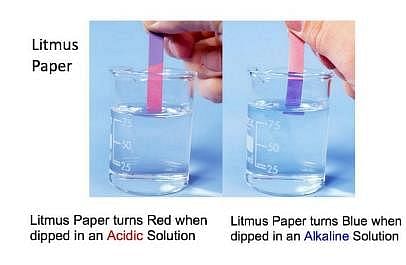UPSC Exam > UPSC Tests > General Science(Prelims) by IRS Divey Sethi > Test: Introduction to Acids & Bases - UPSC MCQ
Test: Introduction to Acids & Bases - UPSC MCQ
Test Description
20 Questions MCQ Test General Science(Prelims) by IRS Divey Sethi - Test: Introduction to Acids & Bases
Test: Introduction to Acids & Bases for UPSC 2024 is part of General Science(Prelims) by IRS Divey Sethi preparation. The Test: Introduction to Acids & Bases questions and answers have been
prepared according to the UPSC exam syllabus.The Test: Introduction to Acids & Bases MCQs are made for UPSC 2024 Exam. Find important
definitions, questions, notes, meanings, examples, exercises, MCQs and online tests for Test: Introduction to Acids & Bases below.
Solutions of Test: Introduction to Acids & Bases questions in English are available as part of our General Science(Prelims) by IRS Divey Sethi for UPSC & Test: Introduction to Acids & Bases solutions in
Hindi for General Science(Prelims) by IRS Divey Sethi course. Download more important topics, notes, lectures and mock
test series for UPSC Exam by signing up for free. Attempt Test: Introduction to Acids & Bases | 20 questions in 15 minutes | Mock test for UPSC preparation | Free important questions MCQ to study General Science(Prelims) by IRS Divey Sethi for UPSC Exam | Download free PDF with solutions
Detailed Solution for Test: Introduction to Acids & Bases - Question 1
Test: Introduction to Acids & Bases - Question 2
Which of the following properties is NOT shown by bases?
Detailed Solution for Test: Introduction to Acids & Bases - Question 2
| 1 Crore+ students have signed up on EduRev. Have you? Download the App |
Detailed Solution for Test: Introduction to Acids & Bases - Question 3
Detailed Solution for Test: Introduction to Acids & Bases - Question 4
Detailed Solution for Test: Introduction to Acids & Bases - Question 5
Detailed Solution for Test: Introduction to Acids & Bases - Question 6
Test: Introduction to Acids & Bases - Question 7
The difference of molecules of water in gypsum and PoP is
Detailed Solution for Test: Introduction to Acids & Bases - Question 7
Test: Introduction to Acids & Bases - Question 8
Which of the following is NOT an organic acid?
Detailed Solution for Test: Introduction to Acids & Bases - Question 8
Test: Introduction to Acids & Bases - Question 9
Which one of the following is acidic/slightly acidic?
Detailed Solution for Test: Introduction to Acids & Bases - Question 9
Test: Introduction to Acids & Bases - Question 10
Which of the following acid is present in tamarind?
Detailed Solution for Test: Introduction to Acids & Bases - Question 10
Detailed Solution for Test: Introduction to Acids & Bases - Question 11
Test: Introduction to Acids & Bases - Question 12
Which of the following properties is not shown by acids ?
Detailed Solution for Test: Introduction to Acids & Bases - Question 12
Detailed Solution for Test: Introduction to Acids & Bases - Question 13
Test: Introduction to Acids & Bases - Question 14
A substance ‘A’ does not dissociate completely into its ions in aqueous solutions. It is bitter in taste and soapy to touch.Identify the substance A.
Detailed Solution for Test: Introduction to Acids & Bases - Question 14
Test: Introduction to Acids & Bases - Question 15
Select the substance which shows acidic behavior in its aqueous solution.
Detailed Solution for Test: Introduction to Acids & Bases - Question 15
Detailed Solution for Test: Introduction to Acids & Bases - Question 16
Test: Introduction to Acids & Bases - Question 17
Which one will NOT change red litmus to blue?
Detailed Solution for Test: Introduction to Acids & Bases - Question 17
Detailed Solution for Test: Introduction to Acids & Bases - Question 18
Test: Introduction to Acids & Bases - Question 19
Name an element which is common to all acids?
Detailed Solution for Test: Introduction to Acids & Bases - Question 19
Test: Introduction to Acids & Bases - Question 20
Name an acid which contains both oxygen and hydrogen?
Detailed Solution for Test: Introduction to Acids & Bases - Question 20
|
39 videos|110 docs|262 tests
|
Information about Test: Introduction to Acids & Bases Page
In this test you can find the Exam questions for Test: Introduction to Acids & Bases solved & explained in the simplest way possible.
Besides giving Questions and answers for Test: Introduction to Acids & Bases, EduRev gives you an ample number of Online tests for practice
|
39 videos|110 docs|262 tests
|
Download as PDF


















